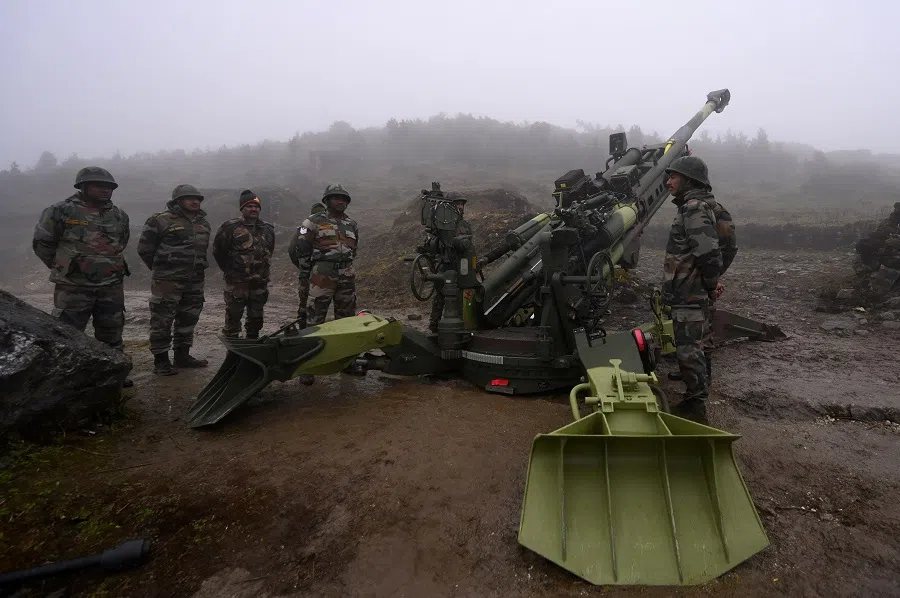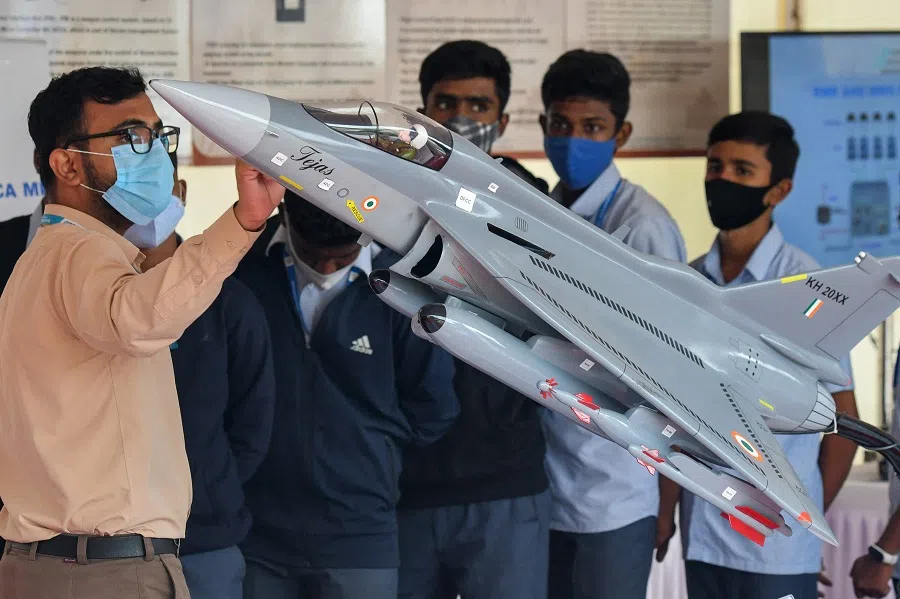Overcoming power imbalances and policy clashes: The quest for a peaceful China-India future
Mind games among the US, China, Russia and India may influence Sino-Indian engagement in the new year and beyond. China could move even closer to Russia in dealing with India, and the US could further call on India as a "major defence partner" in its intense competition with China. External factors aside, a peaceful and cooperative China-India future requires synchronised political will in their bilateral and global diplomacy. Key is unequal power and core interests as China and India each employ the diplomacy of smart power. Will an uneasy status quo be maintained in their long-unresolved boundary dispute, and will they find the impetus for collaboration in a post-Covid-19 order?

China and the US face a choice of cooperation or competition in the world's paramount bilateral relationship. In Asia's premier bilateral ties in this global context, China and India have the option of neighbourly cooperation or conflict in 2022 and beyond it.
Scarcely noticed is a similarity between the current China-India military impasse and the Sino-American estrangement. With US President Joe Biden highlighting competition in his China policy, Beijing harbours no illusion about this great-power equation. Delhi, too, is disillusioned over its major-power interactions with Beijing.
Choice alternatives
Chinese President Xi Jinping and Indian Prime Minister Narendra Modi held candid conversations in 2018 and 2019. The failure of those talks has led to the latest crisis in a nearly seven-decade saga of China-India rivalry.
Biden could sharpen this rivalry by fostering India as America's "major defence partner" despite Delhi's close military ties with Russia, a US adversary. The issue of US sanctions on India for its current contract for a Russian-origin air defence system was hanging in the balance, at this writing. Biden has a soft alternative option, too: not promoting India as his anti-China partner. This would avoid worsening Washington's already complex ties with Beijing.

At another level, Beijing's strategic links with Russia, vis-à-vis the US, could potentially strengthen China in dealing with India. Russian President Vladimir Putin has indeed spoken positively about "China's growing might" and Russia-China ties. Chinese diplomats also underscore that Beijing and Moscow are closer than allies, being each other's strategic anchor.
However, Putin's in-person meeting with Modi in Delhi on 6 December 2021, despite the Covid-19 pandemic, was significant in the Sino-Indian context. Putin told Modi, "We have been promoting military-technical cooperation [with India] like with no other partner of ours".
Joint production of the supersonic cruise missile, Brahmos, and the ongoing delivery of Russia's high-tech S-400 air defence system for India illustrate Putin's point. On S-400, Russian Foreign Minister Sergey Lavrov emphasised that "this deal is underway" despite US pressure on India.
Coinciding with this 21st annual summit between India and Russia, a 2+2 Dialogue among their foreign and defence ministers was launched for practical cooperation. A military-technical cooperation agreement for one more decade was signed, too. In these circumstances, mind-games among the US, China, Russia and India may shape the Sino-Indian engagement in the new year and beyond it.
But India, despite being a nuclear-armed and space-faring country, does not match China's composite national power on the global stage.
Unequal power and core interests
The long-unresolved China-India boundary dispute is creating an aspirational but unequal power struggle between them. Xi's Global Development Initiative for a concert of economies and his Belt and Road Initiative (BRI) for global connectivity shape his country's new profile. A slowing but top-notch economy fuels the modernisation of China's nuclear arsenal and civil-military space odyssey, both aspects of smart power.

Modi conceptualised the International Solar Alliance and the Coalition for Disaster Resilient Infrastructure. But India, despite being a nuclear-armed and space-faring country, does not match China's composite national power on the global stage.
In this asymmetric ambience, both neighbours have core sovereignty interests. The China-Pakistan Economic Corridor (CPEC), BRI's flagship project, covers disputed areas India deems as its inherited sovereign domain. Furthermore, Delhi claims sovereignty over the Chinese-administered Aksai Chin whose de facto border is contiguous with India's Union Territory of Ladakh (UTL).
Beijing views the creation of the UTL as "illegal", striking also a non-negotiable position on the CPEC as a Chinese strategic asset. Escalation of the tussle along this de facto border could, therefore, bring the proximate Pakistan, Beijing's protégé, into a future China-India conflict.
Delhi, too, has a non-negotiable stand on the Indian-administered Arunachal Pradesh (including Tawang) which Beijing deems as its inherited sovereign territory. So, a highly optimistic near-term outlook is the status quo below a red line of full-scale war along the disputed China-India boundary whose total length itself is in dispute.
Beijing and Delhi will, therefore, need synchronised political will to settle all their disputes if neither side can impose a permanent military solution in a mutually-deterred nuclear environment.
A game changer?
China's new Land Borders Law, effective from 1 January 2022, is seen by India as a potential game changer. It empowers Beijing to enhance its combat readiness at China's major disputed land frontier with India.

Until now, the agreed overarching framework to resolve this boundary dispute is the concept of "mutual and equal security". It has remained undefined through numerous rounds of bilateral negotiations since 1993. The new Chinese law may, therefore, set the course for China-India engagement.
The potential Sino-Pakistani strategic gains in Afghanistan in the same neighbourhood will also concern India. Beijing and Delhi will, therefore, need synchronised political will to settle all their disputes if neither side can impose a permanent military solution in a mutually-deterred nuclear environment.
From policy polarity to a new start
The quest for a peaceful China-India future in the new year and beyond is possible only if they could act in a pioneering cooperative spirit. They displayed such a spirit in founding the Asian Infrastructure Investment Bank and the New Development Bank.
Beijing and Delhi practise a diplomacy of smart power based on their respective advanced prowess in science and technology. They advocate, either individually or collectively, the total elimination of nuclear arms in the fullness of time and non-deployment of weapons in Outer Space. Also advocated is the common good in stopping terrorism and in the use of cyberspace, digital realm, artificial intelligence et cetera.
In practice, however, polarised policies of China and India are evident.

In practice, however, polarised policies of China and India are evident. They do not discuss strategic stability in their equation, although they have the "nuclear triad" - the army, navy and air force being armed with atomic weapons. Separately, both countries pursue ballistic missile- and anti-satellite-programmes that entail the use of Outer Space. So far, there has been no concerted Sino-Indian strategy or action against terrorism, too.
Climate security and the global trade and development agendas beckon cooperation. At the recent Climate Summit at Glasgow, India and China advocated "phasing down" of coal usage and sustaining economic development, instead of "phasing out". China took "notice" of the Western "accusations" against such a stand. More important is the new opportunity for India and China to collaborate on climate issues.
On global concerns in a possible post-Covid-19 order, the two neighbours could potentially explore concerted, not just compatible, action. Such an exercise might mark a new starting point to create the much-needed amicable ambience for the Sino-Indian bilateral engagement as well.
Related: India-China relations: Compromises and conflicts amid Covid-19 | Containing China: US and India to sign third military agreement in 'strategic embrace' | South China Sea: The new frontier of Sino-Indian tussle in the Himalayas? | Could fallout from China-India standoff hurt China's global ambitions? | India warms up to the US amid 'new cold' in India-China relations | India's obsession with Thailand's Kra Canal and China's 'failure' | Pakistan stands to gain from Afghanistan turmoil? | Afghanistan in the calculations of India, Pakistan and China: Is there common ground among rivals and allies?

![[Big read] Paying for pleasure: Chinese women indulge in handsome male hosts](https://cassette.sphdigital.com.sg/image/thinkchina/c2cf352c4d2ed7e9531e3525a2bd965a52dc4e85ccc026bc16515baab02389ab)

![[Big read] How UOB’s Wee Ee Cheong masters the long game](https://cassette.sphdigital.com.sg/image/thinkchina/1da0b19a41e4358790304b9f3e83f9596de84096a490ca05b36f58134ae9e8f1)

